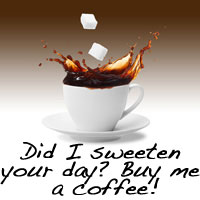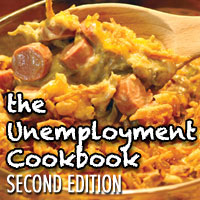Oct 19, 2017 |
by Cara Pearson @ThatBedfordGal
As autumn progresses and the nights (finally!) grow chillier, I’m turning my attention to immune support and respiratory relief. I was so excited when the first chill appeared this past weekend… and then I woke the next day with barely a voice. My windows have poor insulation, so even though I sleep under several comforters, I struggle to keep away the cold air that seems to hate my throat and lungs. I’m grateful during these nights that I live in the South–where it doesn’t often dip below freezing–and not Wisconsin.

Frankly, My Dear . . . : Cardamom is the Perfect Autumn Oil
One of the top export products from Guatemala, Cardamom is actually native to Southeast Asia. Due to the warm, spicy flavor of cardamom, it is also popularly used in curry dishes, and as a companion to sauces, meats, salads, breads, pastries, sweets, tea, and–my personal favorite–coffee. It truly is a versatile and popular spice, enriching food flavor, as well as aiding digestion. Consider diluting one drop of cardamom oil in 4 ounces of liquid to relieve occasional stomach discomfort or after over-indulging at your next family dinner.
Looking for a hands-on way to experience the benefits of cardamom? If you yearn to do some (easy!) fall baking, why not try out your hand with these Hearty Cardamom Oatmeal-Molasses Rolls with doTERRA Cardamom essential oil. I’m pretty sure it will become a new fall favorite! Or, if you’re in the mood for soup, check out this awesome Roasted Butternut Squash recipe!
Because of its high 1, 8-cineole content, Cardamom provides excellent respiratory support. It isn’t the only essential oil I use for this reason–but it is my favorite and usually makes it into most blends I diffuse. An added bonus is that Cardamom is a calming oil. Try adding orange, cinnamon, and clove to cardamom for a delightful crisp autumn spice diffuser blend to help you get in the holiday spirit. Perfect for a cozy evening by the fire.
Regardless of your preferred use for cardamom oil (cooking, aromatic, or topical application), you want to make sure that you are using pure and potent oils. This is one reason why I recommend doTERRA essential oils.
Another reason why I can’t stop talking about doTERRA is their Co-Impact Sourcing®. DoTERRA ensures the quality and efficiency of the harvest and distillation processes by developing close relationships with growers in Guatemala; providing education and aiding with equipment and production processes. At one of their training centers, local families receive certifications and classes that teach job skills, agricultural practices, and more. The objective of this center is to provide locals in this area an opportunity to lift themselves out of poverty, ensuring a future for their communities. I love knowing that I am supporting a company that chooses to make a positive difference in the world.
If you’d like to learn more about doTERRA’s Co-Impact Sourcing initiative in Guatemala, visit these links:
doTERRA’s Partnership with CHOICE Humanitarian Brings Drying Facility to Guatemala
Co-Impact Sourcing Cardamom
Finding New Pathways
TWEET THIS: Tweet: Autumn’s Essential Oil: Cardamom @MollyJoRealy @ThatBedfordGal #essentialoil #cardamom
And Frankly, My Dear . . . That’s all she wrote!

Enigmatic. Fragile. Tenacious. Reader. Writer. Musician. Grace. These are all words that describe Cara. A superhero/barista by day, she makes coffee and plots epic stories in the Deep South. Evenings, she can be found on the ranch, making her own natural skin and beauty products and helping others reach wellness goals through essential oils.
Oct 17, 2017 |
by Stephanie Carroll @CarrollBooks
Note: What follows are photos selected to accompany yesterday’s post, 10 Ways the Victorians Contributed to Modern-Day Halloween.
While not exactly a Wordless Wednesday post, we thought you’d enjoy a visual interpretation of Victorian-era behaviors.
~Mj
Parties
University of Southern California student Halloween party, ca. 1890. [Public domain], via Wikimedia Commons.
Costumes
1890 Halloween Party & Costumes [Public domain], via Wikimedia Commons.
Spiritualism
Caption on Card: “Author’s Third Flashlight Photograph of 1 June, 1912. Portrait of M. Bisson.” The Public Domain Review via Flickr.

This is an image of a couple with a young female spirit. According to the image, it seems to be created to support Spiritualism in the 19th century. It was taken by the spirit photographer William Hope. Circ. 1920. National Media Museum (Couple with a young female spirit) [Public domain or No restrictions], via Wikimedia Commons.
Creepy Photos
A photograph of a “headless woman” produced around 1900. By Samuel Kay Balbirnie (1878-1879) [Public domain], via Wikimedia Commons.

Trick photo, decapitated man with bloody knife, holding his head. 1875. By George Eastman House [No restrictions], via Wikimedia Commons.

Post mortem-photography of a young Norwegian girl. Photographed in 1911 by Gustav Borgen. Attribution: Gustav Borgen [Public domain], via Wikimedia Commons.
Mourning & Death Culture

Victoria’s five daughters (Alice, Helena, Beatrice, Victoria and Louise), March 1862. By William Bambridge (Royal Collection RCIN 2900549 Images of Her World) [Public domain], via Wikimedia Commons.

Holy Trinity churchyard, with an ornate Victorian headstone depicting passion flowers and a dove. Penny Mayes CC, via Wikimedia Commons
Gothic Literature

By Chicago : National Prtg. & Engr. Co. Modifications by Papa Lima Whiskey CC or GFDL, via Wikimedia Commons.
Creepy Houses

Goyer Lee House showing a mixture of Second Empire and Queen Anne Architecture. [Public domain], via Wikimedia Commons.

Example of Gothic Revival architecture also known as neo-gothic: Oxley House, Leeds LS16 8HL. Built 1861 in neo-gothic style. In 1921 became Oxley Hall student residence of the University of Leeds. Now called Oxley House within the Oxley Hall residences. By Chemical Engineer (Own work) [Public domain], via Wikimedia Commons.
TWEET THIS: Stephanie Carroll: #Victorian #Halloween Photographs @RealMojo68 @CarrollBooks
And Frankly, My Dear . . . That’s all she wrote!
About Stephanie Carroll:

Stephanie Carroll
Stephanie Carroll writes Gothic Victorian and Magical Realism fiction. Her debut novel, A White Room, was USA Book News’ 2013 Cross-Genre Winner and was featured as a favorite cover in Shelf Unbound Magazine. As a reporter and community editor, Stephanie earned first place awards from the National Newspaper Association and the Nevada Press Association. She holds degrees in history and social science.
Sign up for her quarterly newsletter, Coming Unhinged with Stephanie Carroll, and find her @CarrollBooks on Facebook, Twitter, Goodreads, Instagram, and Pinterest. Her books are available on Amazon, Barnes & Noble, & www.stephaniecarroll.net
Click on the photos to shop Stephanie’s books:


Oct 16, 2017 |
By Stephanie Carroll @CarrollBooks

Author Stephanie Carroll at The Irwin Street Inn by Corey Ralston
Note: I met Stephanie a few years ago when she spoke at the local writers’ club. Within three minutes we knew we would be great friends. Her novel, A White Room, is based on one of my favorite college reads, The Yellow Wallpaper. And she had purple hair and nail polish. Awesome, right! How could you not like someone like that?
I am so excited to have her come on board as a contributing blogger for Frankly, My Dear. She’s been very eager to share her Victorian and Gothic wisdom with y’all, and I just know you’re going to like her as much as I do. This month, she explains how some modern celebrations started.
~Mj
Halloween is a tradition that dates back to the Celtic Samian new year’s harvest festival, and over time each generation has added their own spice to the holiday that we still gleefully enjoy today.
By the time the Victorians had gotten a hold of Halloween, it was all about having fun!
The Victorians contributed to modern Halloween both intentionally by how they celebrated and unintentionally through their own macabre culture.
So let’s take a note from our late nineteenth century spooks and enjoy this Halloween in Victorian style!
- Crafts & Decorations
If you want some fantastic ideas for unique and traditional looking decorations, you have to read about what the Victorians did. They didn’t have store-bought cobwebs and Spirit Halloween stores. They did everything themselves.
They got really creative by doing things like putting out tin plates filled with green flames using alcohol and salts and making hand-made party favors or clever invitations often containing bewitching rhymes:
Come at the witching hour of eight
And let the fairies read your fate;
Reveal to none this secret plot
or woe—not luck—will be your lot!
For more, check out my post on Victorian Halloween Decorations or a wonderfully cited article by Lesley Bannatyne (from which the above poem was taken). For great ideas of a modern Victorian take, check out, as always, Pinterest!
- Halloween Parlor Games
The Victorians were all about playing games. They loved things like blind man’s bluff and bobbing for apples in addition to games of the more spooky variety. Young girls and boys had an entire host of spells and charms that would predict their future mates. These included things like walking downstairs backwards in complete silence while eating an apple and holding a mirror up to look for the face of a true love to appear – sounds a little dangerous to me!
Speaking of danger …
Unfortunately, at least one young woman suffered severe consequences for such games. In a news article from the time, a girl ate a whole chicken heart hoping that it would somehow predict her future, but it lodged in her throat and created an abscess, which later burst, and the blood choked her to death. Read the clipping in Lesley Bannatyne’s article.
Don’t worry, according to Bannatyne they also enjoyed more whimsical games like “Kissing the Blarney Stone,” where a blindfolded guest tried to find a white stone set on a table by kissing for it. They also told scary stories as did the most popular newspapers and magazines of the day, many of which focused on sensationalism and romance as the ultimate theme.
- Parties
The Victorians loved parties and even Queen Victoria herself partook in some awesome Halloween festivities. The Victorians were not afraid to toy with the occult in their celebrations. They often did seances, spells (some historical, others fabricated in good fun) and of course the thrilling haunted house.
One such haunted party mentioned in Bannatyne’s article was a haunted cellar set up in a real cellar. It included dripping water, shredded paper hanging from the ceiling, a hidden electric fan and a good old scare. Upon entering the haunted cellar, guests might be grabbed by a wet hand or have a paper bag burst over their heads.
- Costumes
As time went on, parties turned into theme parties and parades, so of course costumes were an obvious addition. Costumes were a big part of Halloween origins from Celtic and All Saints Day traditions.
Well then, wouldn’t this be a tradition we kept from the original festival? Not exactly.
According to History.com costumes weren’t as popular until after the Potato Famine of 1846, which drove thousands of Irish immigrants to the US and elsewhere. Their traditions, which were closer to the original Celtic practices re-popularized things like costumes.
Then, according to History.com, around the turn of the century community leaders and newspapers encouraged people to not focus so much on the occult practices, but instead to look at the holiday as a time for happy get togethers. After that, costumes and general Halloween practices became less symbolic of old religious practices and more hokey.
- Trick or Treat!
Another tradition that came out of the influx of Irish immigrants, according to History.com, was a practice of dressing up and going from house to house asking for food or money.
This ultimately evolved into our day of glorious candy feasting. Oh, and it wasn’t until the mid-20th century that Halloween became a kid-centered holiday, so the town of Bathurst, which has prohibited trick-or-treating after the age of 16, isn’t following traditional protocols! Tisk! Tisk! ;-)
- Spiritualism
Spiritualism was and continues to be a religion born out of the Fox Sisters’ claims to hear ghosts wrap-tap-tapping on their tables and doors. Although not intentionally Halloween related, we’ve taken a few liberties from this originally Victorian tradition.
Spiritualism grew in popularity through the 1920s as a way to contact passed loved ones. It is mainly known for seances with mediums, some of which were fakes, others … who knows?
For more on Spiritualism, check out author Nicole Evelina’s post or the article on Victorian Web. You can also check out BBC’s article on Modern Spiritualism.
- Creepy Photos
As soon as Victorians realized they could play around with photos, they went nuts! They loved using trick photography to put in ghouls and goblins or make it look like they were holding their own decapitated heads.
Spiritualists produced a huge body of creepy photos as well, many of which claim to show ghostly ectoplasm hovering nearby or even emanating from individuals. Some have what appear to be humanistic qualities or impressions within the viscous or goopy looking smoke.
Death Photography was a tradition wherein people took photos of the deceased. Whether it was to protect their souls or just to remember them by, it produced some creepy works. These works were a part of what we know as mourning culture.
How does Victorian photography come into play with Halloween? This is another unintentional influence. Scary movies, like The Others, make use of Victorian photography all the time, and scary movies are abound during Halloween.
And let’s not forget Disney’s Haunted Mansion, the ballroom of which was inspired by the Winchester Mystery House.
- Death & Mourning Culture
The Victorians were obsessed with death. There were many factors at play that explains why this is, but what it left us with was an entire cannon of macabre associations that we call upon during Halloween, particularly from the elaborate shows made out of funerals, which led to some amazing graveyards.
For more check out my posts on Why the Victorians were Obsessed with Death and Little Known Facts About Victorian Mourning Culture. Although it’s not directly connected to Victorians, All Saints’ Day also contributes a lot of the Halloween associations we today.
- Gothic Literature
Though the Victorians didn’t necessarily know or intend it, much of our current Halloween culture actually comes out of Victorian Gothic literature like Dracula, The Strange Tale of Dr. Jekyll and Mr. Hyde, Frankenstein, Turn of the Screw and The Phantom of the Opera, just to name a few.
For more on Gothic Victorian literature, check out this article on Horror Novel’s Review.
- Creepy Houses
Something else the Victorians gave us for Halloween without ever knowing it was creepy haunted looking houses. From the Second Empire style, which inspired the house in Psycho, to Gothic Revival, which reinvented the Gothic architecture for which the genre of Gothic literature is named, that old nineteenth century house down the street is freaking us all out, especially around Halloween!
For more, check out my post on What Makes Victorian Houses Seem so Haunted.
For more on Halloween history and traditions, check out these awesome posts by authors Essie Fox, Lesley Bannatyne and Mimi Matthews.
I hope you enjoyed this post and I hope you all have a Happy Halloween! A big thank you to Molly for inviting me to share creepy Victorian stuff on her blog.
TWEET THIS: 10 Ways the #Victorians Contributed to Modern-Day #Halloween @RealMojo68 @CarrollBooks
And Frankly, My Dear . . . That’s all she wrote!
About Stephanie Carroll:

Stephanie Carroll
Stephanie Carroll writes Gothic Victorian and Magical Realism fiction. Her debut novel, A White Room, was USA Book News’ 2013 Cross-Genre Winner and was featured as a favorite cover in Shelf Unbound Magazine. As a reporter and community editor, Stephanie earned first place awards from the National Newspaper Association and the Nevada Press Association. She holds degrees in history and social science.
Sign up for her quarterly newsletter, Coming Unhinged with Stephanie Carroll, and find her @CarrollBooks on Facebook, Twitter, Goodreads, Instagram, and Pinterest. Her books are available on Amazon, Barnes & Noble, & www.stephaniecarroll.net
Click on the photos to shop Stephanie’s books:


Oct 15, 2017 |
by Molly Jo Realy @MollyJoRealy

Frankly, On Faith.
Magical Thinking. It’s creating the dots that connect “A” to “B”. If I wake up at 5:38 exactly, it’s a sign I should buy a lottery ticket. Or Because I drank two cups of coffee, the tree sprouted new growth.
Magical Thinking, based on superstitions, is faith gone awry.
Faith believes things will happen due to God’s sovereignty,
not because of our own actions.
Magical Thinking removes God from the equation. Miracle Thinking (Faith) understands that we don’t understand, but still we know it’s going to be okay. Magical Thinking says we will force the square peg into the round hole and explain it later. Miracle Thinking says God works outside the governing laws of dynamics, and He has made all things, and continues to renew all things, so if and when He wants, that square peg will adjust, that round hole will adjust, and they will fit together at the right time. Magical Thinking forces. Miracle Thinking believes.
Faith doesn’t ask for proof of what it is. Faith is the proof of what we believe. Faith is the dots we connect from lifepoint to lifepoint, knowing it all points back to the One who created all Life.
“Faith shows the reality of what we hope for; it is the evidence of things we cannot see.”
~Hebrews 11:1 NLT
How does your faith prove God to your world?

Frankly, On Faith: Faith is Not Magical
TWEET THIS: Tweet: How does your faith prove God to your world? @RealMojo68 #franklyonfaith
TWEET THIS: #Faith believes things will happen due to God’s sovereignty, not because of our own actions. @RealMojo68
And Frankly, My Dear . . . That’s all she wrote!
Save





























